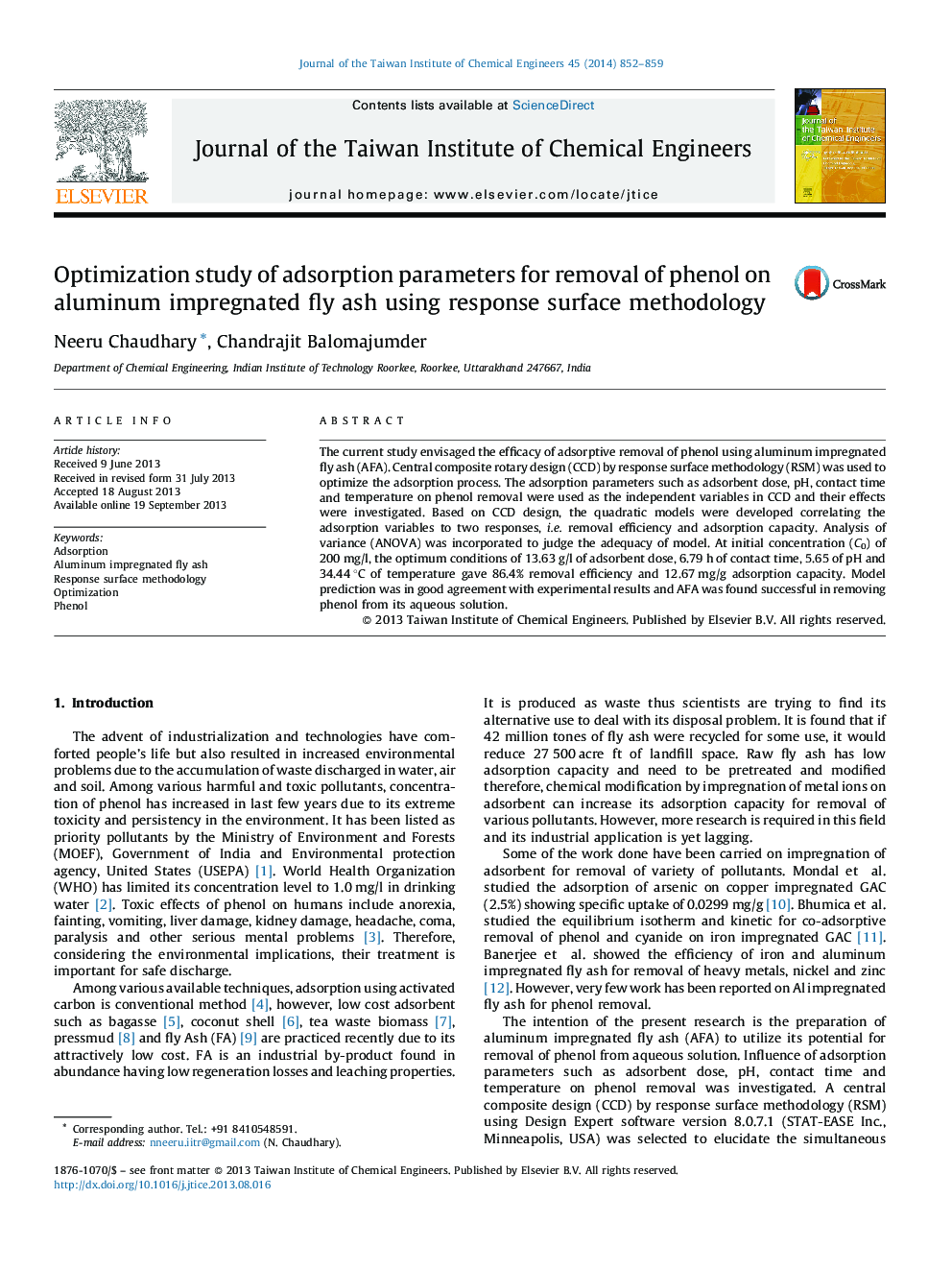| کد مقاله | کد نشریه | سال انتشار | مقاله انگلیسی | نسخه تمام متن |
|---|---|---|---|---|
| 691250 | 1460432 | 2014 | 8 صفحه PDF | دانلود رایگان |
• Preparation of AFA for phenol removal.
• Characterization of fly ash before and after impregnation was performed and its composition and structure were successfully analyzed.
• Optimized condition for adsorption process was determined using RSM.
• Model prediction was in good agreement with experimental results.
• AFA successfully removed the phenol from aqueous solution.
The current study envisaged the efficacy of adsorptive removal of phenol using aluminum impregnated fly ash (AFA). Central composite rotary design (CCD) by response surface methodology (RSM) was used to optimize the adsorption process. The adsorption parameters such as adsorbent dose, pH, contact time and temperature on phenol removal were used as the independent variables in CCD and their effects were investigated. Based on CCD design, the quadratic models were developed correlating the adsorption variables to two responses, i.e. removal efficiency and adsorption capacity. Analysis of variance (ANOVA) was incorporated to judge the adequacy of model. At initial concentration (C0) of 200 mg/l, the optimum conditions of 13.63 g/l of adsorbent dose, 6.79 h of contact time, 5.65 of pH and 34.44 °C of temperature gave 86.4% removal efficiency and 12.67 mg/g adsorption capacity. Model prediction was in good agreement with experimental results and AFA was found successful in removing phenol from its aqueous solution.
Journal: Journal of the Taiwan Institute of Chemical Engineers - Volume 45, Issue 3, May 2014, Pages 852–859
